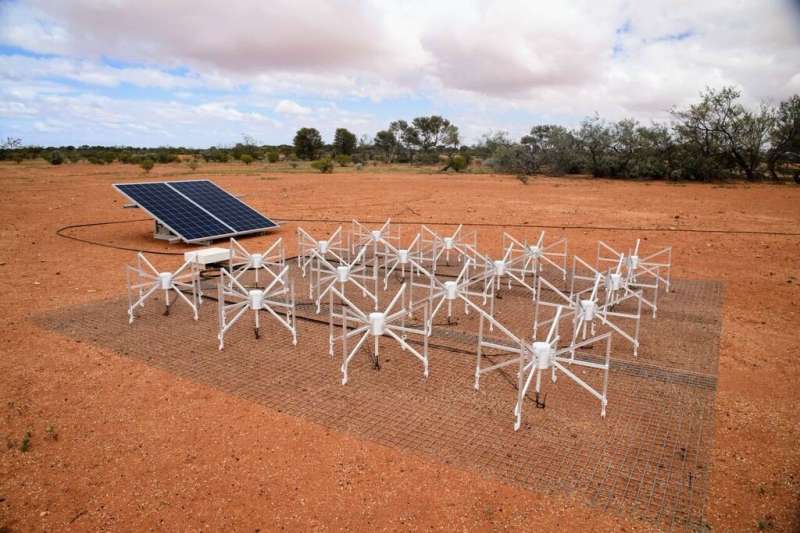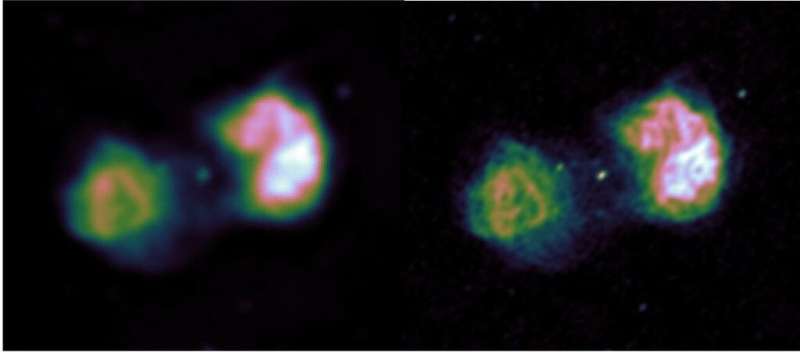MWA radio telescope expansion complete—Exploration of the universe's first stars begins

When and how were the first stars in the universe born? The Murchison Widefield Array (MWA) radio telescope in the desert of Western Australia, one of the largest of its kind, was constructed to clarify this and many other mysteries. The MWA is an international radio-astronomy project conducted by seven countries including Japan and Australia. In Japan, Kumamoto University (main), Nagoya University, Kagoshima University, University of Tokyo, Tohoku University, and the National Astronomical Observatory of Japan are participating in the effort. Construction to increase the sensitivity of the MWA began in 2016, and was completed in October of this year (2017). The antennas were doubled in number to 4,096 over a 5 km2 area, which greatly improved the sensitivity of the telescope. The upgraded MWA will seek answers to mysteries of the universe that began 13.7 billion years ago.
It is believed that the universe began with the Big Bang 13.8 billion years ago. Our sun was born 4.6 billion years ago, making it relatively recent in the long history of the universe. It is theorized that the first stars of the universe would have been born about 100 million years after the universe began, or about 13.7 billion years in the past. Such stars are too far away to observe with state-of-the-art telescopes. The MWA, on the other hand, can observe the distribution of hydrogen gas 100 million to 1 billion years after the Big Bang. Stars are born by the condensation of hydrogen gas, and if you observe the distribution of hydrogen gas far enough back in time, you can explore how the first stars were born in the universe.
However, since the signal from hydrogen gas of the ancient universe is very weak, a telescope with a wide area is necessary. With twice the number of antennas over four times the area of its previous incarnation, the MWA has greatly improved its sensitivity and image quality. It is now possible to observe much more detailed structures of the universe and the search for the first stars is underway. Furthermore, cooperative observation with the Japanese Subaru telescope in Hawaii is also planned. That collaboration will further explore the mysteries from 100 million to 1 billion years after the universe began.

Provided by Kumamoto University





















